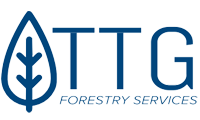| HOME > View Blog > |
View Blog
Wednesday, Sep 17, 2014 12:19pm

Elbon Rye (Secale cerale Var. Elbon)
 Elbon Rye is a cool season cereal grain. Cereal grains include crops such as wheat, oats, and barley as wells as rye. Rye is used to make products such as rye bread and rye whiskey. Elbon Rye is a variety of cereal rye developed specifically as a forage crop for deer and cattle. It should not be confused with Annual Rye (Ryegrass) which is a cool season grass. Annual Rye (Ryegrass) is not recommended for Food Plots.
Elbon Rye is a cool season cereal grain. Cereal grains include crops such as wheat, oats, and barley as wells as rye. Rye is used to make products such as rye bread and rye whiskey. Elbon Rye is a variety of cereal rye developed specifically as a forage crop for deer and cattle. It should not be confused with Annual Rye (Ryegrass) which is a cool season grass. Annual Rye (Ryegrass) is not recommended for Food Plots.
Elbon Rye is a palatable and nutritious deer forage. Wild Turkey will consume it as greens and it also provides bugging habitat for poults.
Elbon Rye is extremely winter hardy and produces more fall and winter forage than most other cool season cereal grains. It is widely adapted across the Southern US. It out performs most other cool season cereal grains on low fertility soils. It tolerates soil pH from 5.5-7.5. It also does better than most cool season cereal grains, in well drained and sandy soils.
Another benefit of Elbon Rye is that it improve your foof plot's soil. It produces high amount of organic matter in its root system as well as its stems. Shredding and disking it after it matures will add organic matter or “green manure” to your food plot. In addition, Elbon Rye is also often used to reduce soil pests. Elbon Rye roots serve as traps for nematodes. Nematodes are small microscopic animals that live in the soil and feed on roots of developing plants. Severe infestation of nematodes can stunt plants and cause them to yellow and often die prematurely. Gardeners often plant Elbon Rye to help rid their gardens of these damaging pests.
Plant September – October. Disk and then smooth the seed bed by dragging with a drag harrow. Broadcast 120-150 lbs. per acre. Do not disk seed in. Lightly drag the seed in with a drag harrow. Cover seed ¼ to ½ inch deep. Fertilize with 300 lbs. per acre of 13-13-13 at establishment in the absence of a soil test.
